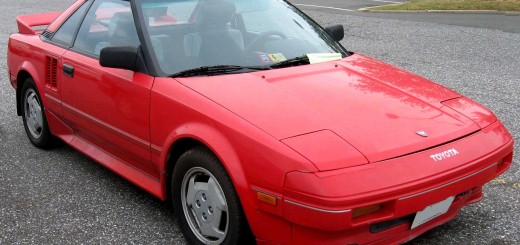Tool Required
- Various sockets, wrenches, pliers & ratchet
- Cheater bar for those stubborn nuts & bolts
- Bench Vice
- Monkey wrench or large channel locks
- Dremel tool (maybe, see step 6)
- Spring insulators x2
- Bumpstops x2
Time needed: 1 hour
Rear Removal
- Remove the 3 screws holding the decklid side panel.
- Loosen the 19mm strut bolt (green) and the three 12mm strut top bolts (red). Do not remove.
- Raise and support the rear of the car on jack stands.
- Remove the rear wheel.
- Remove the clip holding the brake line to the strut bracket.
- Push the line up and then bend the bracket to open up space to remove the brakeline from the bracket. You may need a dremel tool to cut a line into the bracket.
- Remove the sway bar end link from the strut assembly. 14mm nut.
Rear Removal
1) Remove the 3 screws holding the decklid side panel.

2) Loosen the 19mm strut bolt (green) and the three 12mm strut top bolts (red). Do not remove.

3) Raise and support the rear of the car on jack stands.
4) Remove the rear wheel.
5) Remove the clip holding the brake line to the strut bracket.

6) Push the line up and then bend the bracket to open up space to remove the brakeline from the bracket. You may need a dremel tool to cut a line into the bracket.

7) Remove the sway bar end link from the strut assembly. 14mm nut.

8) Mark the camber position on the axle carrier. Then remove the two 19mm bolts/nuts holding the strut assembly to the axle carrier.

9) Remove the three 12mm bolts (red) from the strut top.

10) May take some working of the strut assembly and axle carrier, but eventually you can wiggle the strut assembly loose and can remove it from the vehicle.

11) Remove the 19mm bolt holding the strut to the strut top. I did not need a spring compressor for the rear. However, to be safe, use one.

12) Remove the strut top, spring and bumpstop.
13) Place the strut assembly in a vice, and then using a pipe wrench or channel locks remove the gland nut. The insert should then pull right out. Be careful of some oil within the strut assembly.

14) Here’s the parts contained within the strut assembly.

Installation
1) Place the new strut insert inside the assembly.

2) Pour some coolant or oil in the assembly to provide a bath for the insert. Helps dissipate heat.

3) Insert the new gland nut and tighten it down to the spec provided by your new inserts. You also need to measure the distance between the gland nut and the strut assembly (the exposed threads). If not within spec you will need to use a spacer. FYI, my Tokico Illuminas did not need any spacers.

4) Slide new (or old if it’s in good shape) bumpstop onto the shaft of the insert. Notice I cut the top off the bumpstop, as I am using ST springs.

5) Insert new spring insulator.

6) Position the spring into the assembly, making sure that it is positioned correctly in the insulator.

7) Insert strut top and tighten down with new 19mm bolt provided with the inserts. Make sure the strut top is aligned the proper way relative to the strut assembly. Consult the BGB or Haynes. (The ‘point’ in the triangle of the strut top should point toward the outside of the vehicle.)

8) Also, make sure the top of the strut insert is properly aligned with the bottom of the strut top. I ended up having to wait till I installed the assemblies in the car, before I was able to tighten the strut top bolt all the way to spec. The insert kept turning, and I didn’t want to grab the shaft with a pair of pliers. That would have been a bad thing.

9) Here’s the two assemblies ready to go back into the car.

10) Attach the one end of the end-link to the strut assembly, lot easier than doing it with the strut assembly in the car.

11) Insert the strut assemblies back into the car, top first. Hand-tighten the three 12mm bolts to hold the assembly in place.

12) Set the camber adjuster back to where you marked it, and then wiggle the axle carrier back into the strut assembly.


13) Insert and tighten the 17mm bolts into the assembly and axle carrier. Also attach the other end of the end links to the sway bar.

14) Use a jack to raise the axle carrier up, to compress the spring.

15) This will allow you to easily tighten the three 12mm strut top bolts (red). Also, if you weren’t able to align the strut insert ino the bottom of the strut top, you can do that at this time. Tighten the 19mm bolt (green) down to spec.

16) Mount wheel & lower vehicle.
This documentation in no way replaces the Toyota MR2 Repair Manuals. The purpose of this content is only to provide supplementary information to fellow MR2 enthusiasts. Midship Runabout and its contributing authors will not be held responsible for any injury or damages that may occur as the result of practicing any of the methods or procedures described within this website. Article and photo submissions are property of the contributing author.

